Kailash Chandra Dash
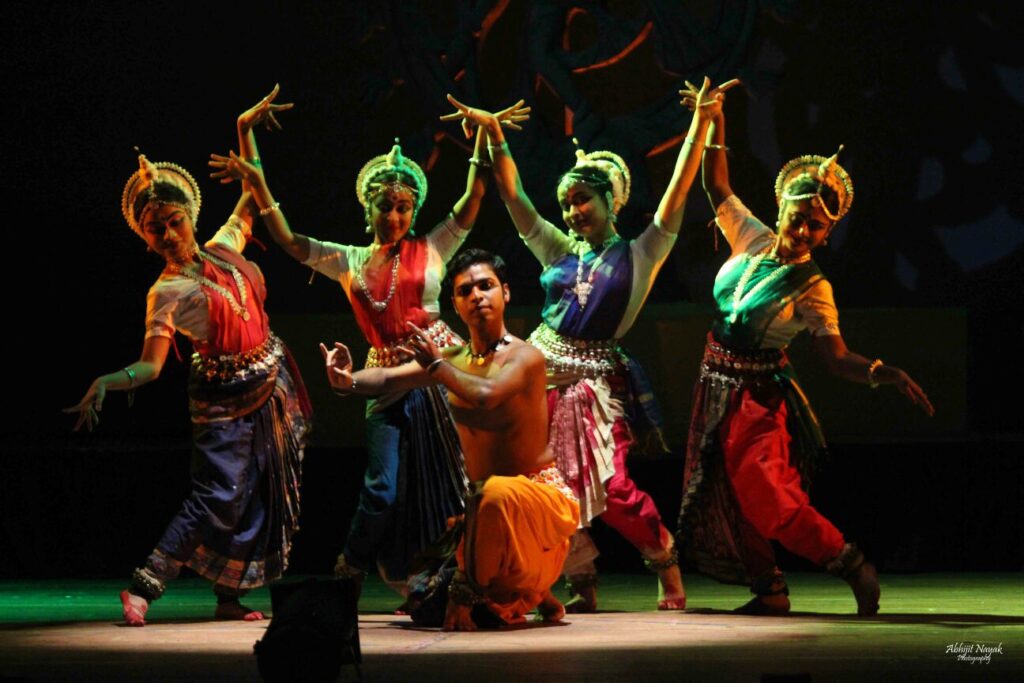
Important indices of Odia’s cultural identity were Rasa-Suanga-Yatra which continued from the medieval phase to the colonial phase. The Yatras (Suangas, lilas) were well known in Balasore, Cuttack and Puri in the colonial phase. In Odisha in the 19th century Bengali Yatra was widely known and popular.(Utkala Dipika, 28th October 1876) But the Balasori party imitated the Bengali Yatra and produced a more forceful Odia Yatra. In the 1880s Odia Yatra was confined to Ramalila,Krishna Lila and Subhadra Harana. The first two were famous in Cuttack, because they had akharas in the big villages of Cuttack. Subhadra Harana was confined to Bhadrak. It was commented that these Yatras had no actual musical touch and the Yatra makers did not know what was music.They had known decoration and they had satisfied the public by reciting pothis and unchaste sentences. Yatra with proper music was unknown to the Odias. The Natua boys knew a little bit of music but as they did not sing on a particular theme, the visitors could not like the Yatra.
As the songs were disconnected from the Yatra, the public felt increasing boredom. They did not know pure Raga Ragini,tala and narita.(Ibid.)As there was no good Yatra in Odisha in the 19th century,Kabichandra Raghunath Parikshya composed Gopinatha Vallabha Nataka and others to cater to this need.The songs in the text of Kabichandra were composed in the raga and tala of South Hindustani and Bengali and he introduced this in South Odisha, but it did not come to Cuttack, Puri and Balasore zone.(Ibid.) In Odisha Yatra remained in association with character and Suanga and there was no real touch of music in the 1880s.(Ibid., 4th October 1880) Bengali Yatra reached the stage of perfection because worthy people accepted Yatra as a matter of their occupation and this tendency enriched their Yatra.Das Rai Govinda Adhikari and Gopal Odiya and others with their songs made Bengali Yatra far more developed in this phase.
In Odisha there were singers and poets, but in the middle of the 19th century such type of artists were prominently absent. Without music Yatra in Odisha was meaningless. Some Palagayakas were only available to amuse the people with their action and song. Hence the Odias felt the need of music based yatra in Odisha which would be appreciated like Bengali Yatra. In Cuttack town some rich men spent time and money for the Gotipua dance; but they did not devote their money and time for music.
Rasa and Lilas were well known in Odisha in the colonial phase like Suanga Yatras. The Basanta rasa Yatra of Satyabadi was a unique Yatra in the 1880s.(Ibid., 27th June 1885) The sites of the Yatra were surrounded with flower-laden trees like Bakula and Churriana. On the western side is the temple of Satyabadi Gopal Jeo. On the southern side there is an artificial Kunja. On the northside for the enactment of the lilas (characters) some temples were built upon which there was a chhamunda covered with chandratapa. The pillars were adorned with light which did not distinguish the night and the day. Some handsome boys in the dress of girls (Gopis) acted well which appeared like Srikrishna’s Rasakrida in Brindavana. In the 1880s Madhusudan Pattanaik was in charge of the yatra and for its expense about 4000 Rupees were spent every year. The concluding part of the show was observed on the last day called Govardhana Divas.(Ibid.) The autumn Rasa Yatra of this area was instituted by Dharma Narayana Mahajana Gangadhar Ota. About Rs. 2000 was spent for the occasion. Both the occasions were well attended by about 5000 people. The Gobardhana lila was completed on 3rd June 1885 which was attended by two thousand people.(Ibid.)
As early as 1912 Baishnab Pani, a member of the Yatra of Kothpada Math came to village Malihata and started a Yatra in imitation of the theatres. He took small boys and trained them and used the songs and dialogues of the dramas of Rama Shankar Ray in suangas as it was well appreciated by the people.(Ibid.,2nd November 1912) This was a pure form of Yatra and Baishnab Pani had to display continual shows to the people who were enthusiastic about it. The party of Pani showed the Yatra in different villages.
In the 20th century Sarada Rasa lila was very famous in Kendrapara. Sri Radha Govinda Saradarasa was a text composed by the chief of Athagada who sent Ananta Sangitaratna and Kusun Bayakaratna to make lila in the Radhagobinda Jeo temple at Kendrapara.(Ibid., 24th November 1917) The owner of the temple Balarama Bhramarbara Ray and his younger brother Govinda Chandra Suradeotook successful steps for the enactment of the rasalila. The Rasa Lila was very successful. Radha Govinda Rasa Lila was the most significant in south eastern India. It was organised by Govinda Chandra Suradeo And Shyam Sundar Simhari. Odia’s Raja Govinda Rasa Lila had gained wide popularity in Brindabana and Navadvipa-two important centres of Rasa.It reflected Odia’s cultural identity because in the expression of this lila the actors had shown greater success than that of the South Natuas. The old Odia lyrics were sung with sweet tone, the dance was very seductive. Gobinda Chandra was solely responsible for the success of this lila. He picked up village peasant boys and trained them for this Yatra.(Ibid., 4th January 1919)
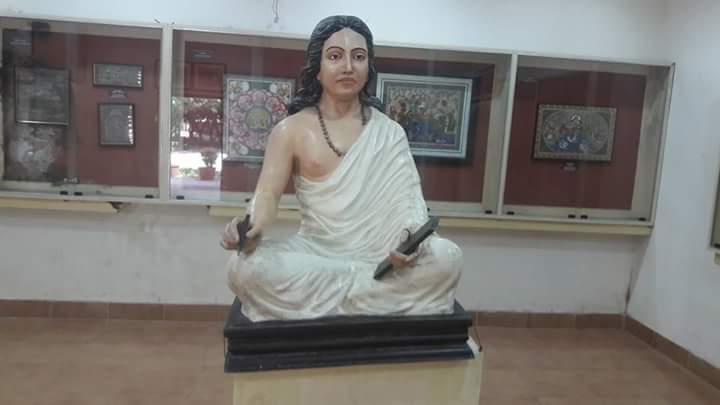
An interesting Odia Rasa was provided by Gita Govinda Nataka. It was composed by Brajabasi Babaji Vaishnava Charan Das in 1928 in the light of Mahakavya Gita Govinda.(Gita Govinda Natak,1928).It was printed on behalf of Radha Govinda Rasalila of Satyabadi on 5th April 1928.In about 1828 Babaji’s maternal grandfather Pindika Srichandan On the basis of this Mahakavya composed Vasanta Rasa.(Ibid.)It was accepted as a valuable jewel by the people of Odisha.(Ibid.) The songs of Vasantarasa were used in the nama sankirtana mandali.Babaji Composed Vasanta Utsaba,Virahamana and Manabhanjan on the basis of the Vasanta Rasa. He also composed Vasanta Rasa Nataka from the essence of the four dramas started above. Babaji himself was a Brajabasi and so he had great admiration for Brindabana.Brindabana is the liladhama of of Krishna. It is the symbolic representation of that aspect of the divinity which forms the space for the performance of the divine self-manifestation.(Thielmann-1998) As Lila is an activity it must have an area in which to manifest itself. The image of Brindabana puts this concept into concrete terms of a mentally conceivable place. As Jagannatha Puri was an important centre of Krishna worship,it was also accepted as the Lilastali like Brindabana.(Dash 1998:13-15).Due to the identification of Krishna with Jagannatha Odisha got special importance from the point of view of Lila. Many actors of Rasa Lila of Utkala by their mode of expression and pose(Bhavabhangi) ) were far superior to the Dakshini Natua(players of the south).For this superiority and excellence of Lila Govinda Chandra Suradeo was to be credited.(Ibid.) In the thirties and forties of the 20th century Mohan Sundar Deb Goswami and Kalicharan Patnaik also gave expression to Orissa Rasalila to foster Odia cultural space. (Ibid.)
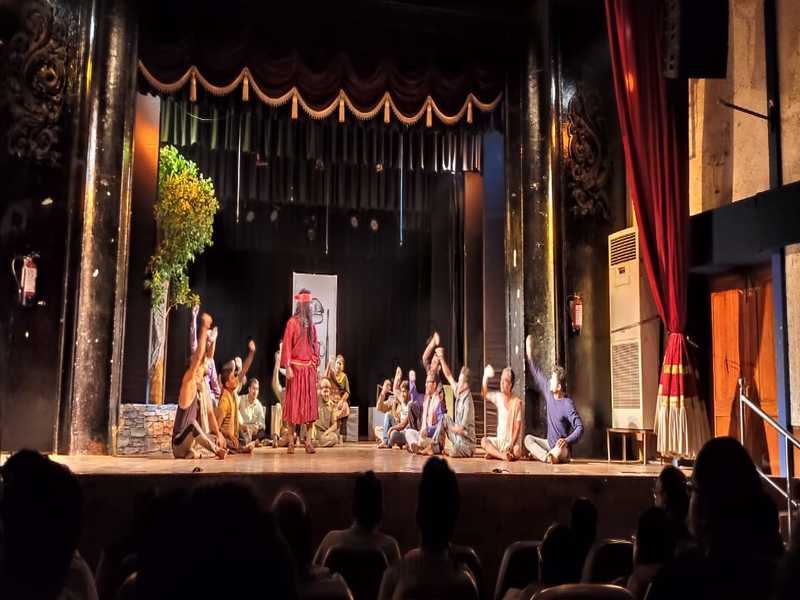
Odia theatrical plays became effective as a part of Odia’s cultural space in the last three decades of the 19th century. In the house of Gopal Prasad Mitra in Cuttack in 1881 on the occasion of Basant Panchami a drama was staged which was Kanchi Kaveri.(Utkala Dipika, 12th February 1881) In 1878 on the occasion of Saraswati Puja Ramabhiseka was staged in Cuttack and it was in Bengali language. Odia interest was less for it then and they wanted it eagerly to see the drama in Odia language. The Kanchi, Kaveri drama fulfilled Odia ambition. In this phase the preparation of a Rangbhumi for the drama and the scenes associated with it were very costly affairs as the rich people had no sympathy for this cultural activities. The drama was staged with considerable difficulty.(Ibid.) This has been accepted as the first drama in Odia language and the artists were new and they had never appeared in the Natyashala before this.(Ibid.) It was believed that such dramas in Odia would be more effective and enjoyable. The drama Kanchi Kaveri satisfied the Hindu sentiment and also Odia sentiment because Jagannatha was the main element. Odia Hindu identity manifested through it. The dramas of Ramasankar Ray were staged in the 19th century and they enhanced Odia interest in drama. (Nayak 1988:11-13)
The Mahanta of kothpada Daitari Raghunath Puri was a key force in the making of stage drama in the 19th century.(Ibid.) Another important theatre was Radha Govinda theatre which was originally staging Odia dramas but as there was no good Odia drama it staged Bengali drama and was converted into a Bengali theatre. The Sambad Bahika of Balasore on 23rd June 1912 demanded to convert it into an Odia stage.(Utkala Dipika,29th June 1912) In the beginning of the 20th century like Ramasankar’s Kanchi Kaveri there was Sita Bibaha of Kampala Mishra Which was staged by Medical School boys.(Ibid.) Govinda Chandra Suradeo was able to add songs in Kanchi Kaveri after omitting all old songs and this made the drama very popular in Odisha.(Ibid.) Staging the drama became a significant part of cultural space of the Odias in the 19th century A.D. and in the 20th century A.D. they took effective steps for reforming the theatre based drama to be as attractive as that of the Bengali theatre. The purpose was to show that Odia drama could be interesting like Bengali drama which indicated an assertion of Odia identity. There was actually no theatre in Odisha in the full sense of the term. Steps were taken in the 19th century to make theatres but that could not last for years. The Radhakrishna Theatre of Balanga began in 1914 by Banamali Pati.(Utkala Dipika, 10th January 1920) Bikram Deb Burma, the chief of Jeypore had constructed a Rangalaya in Visakhapatnam and there staged his own drama in Odia called Radhamadhab much before 1903. (Sambalpur Hiteisini, 10th May, 1903) The Odias of South Odisha were glad to see that stage. The second prince of Parlakhemundi Padmanabha Narayana Deb after long effort constructed a rangalaya (theatre hall) in his own kingdom. Odia dramas were staged before 1903 in that stage.(Ibid.) There were two rangalayas in Indupur of Visakhapatnam and Rasulkunda of Ghumsar during this phase.(Ibid.) In the capital of Bamanda a theatre party was established in 1910 and it staged Sita Bibaha with great success. This theatre party also staged Ramasankar’s Kanchi Kaveri on 26th and 27th March 1910.(Ibid. 2nd April 1910) Kesari Rangalaya, an important stage was constructed by the effort of the chief of Dharakote in the village Pitala.(Ibid.,3rd May 1913) This party had staged dramas in different parts of Ganjam. The manager of the party was Mohan Panda who was successful in the work of the stage drama. The Vidusaka (comic actor) Bauri Mahapatra was very successful in his action.(Ibid.) Ganjam was famous for Ramalila, Krishnalila, Madhumangal and other lilas and Suangas. But Padmanabha Deb, the second prince of Parlakhemundi was the first to start stage drama in Ganjam. Imitating him Narasimha Das had established Marddaraja Rangalaya in Purushottampur with the support of the chief of Khallikote. Kesari Rangalaya was established in Pitala in the pattern of the Marddaraja Rangalaya. Sribatsa Panda, a great social activist in his discussion about Kesari Rangalaya described the defects in the stage drama like the obscene theme in the drama, amorous elements and old styled songs.(Ibid.) He suggested that Rangalaya is a teaching place. The actors have to be educated and well-mannered and they have to follow honest ways so that they will be appreciated in public. The presence of unity, goodness and discipline is essential in the theatrical party. Thus Sribatsa Panda wanted that the theatrical party in Odisha must follow modern style and at the same time it must have educative value.
In 1919 under the active support of the chief of Bamanda a new theatre (Rangamancha) was established. It was called Gangeya Rangamancha. Bengali artist and actor Dhirendranath Gangopadhyay and his friend Prasanna Kumar made the Rangamancha very attractive.(Ibid., 8th November 1919) In 1919 this theatre displayed the drama Bhisma of Aswini Kumar Ghosh which captivated the popular attention.(Ibid.) In 1918 in Hindol, the chief, Nabakishore Madaraja Jagaddeba had established a new theatre in his state.(Ibid., 21st September 1918) In Brihat Khemundi Ramanuja Rangalaya was very active in 1918.(Ibid., 2nd February 1918)
For twenty years till 1918 there was a desire on the part of the Odias to reform and transform their Yatras and dramas. Utkala Sahitya, in the first and second decade of the 20th century A.D. could focus the increasing demands of the Odias for a better stage and better play. Krishna Prasad Chaudhuri in an insightful article in Utkala Sahitya emphasised on the change of the Odia stage drama with the effective role of Rama Shankar Ray and Govinda Chandra Suradeo.(Utkala Sahitya, Vol. XXII, No. II, Sala 1325/ Jyestha) He pointed out the successful stage drama in Kendrapara by Govinda Suradeo. The Kendrapara Party consisted of thirteen boys of the age group 9 to 14. Govinda was the leader of the drama party. He got the able support of the famous singer Gokul Chandra Srichandan and other young men of the area. He was able to present new style in his dramas and shows were very attractive. There was originality and beauty in them. The stage drama of Govinda Chandra washed away all ugly shows of the opera parties in Kendrapara which were staging such ugly shows for years on the auspicious occasions of the Narendra family. The Danalila drama of Govinda Deo was very heart touching and interesting and Manabhanjan was another drama of Deo which was also staged there. Krishna Prasad Chaudhuri in his article stated the contribution of an Odia named Gopal Ude in the formation of Yatradal (theatre party) in the first stage drama in Bengal. The Odias had this inspiring progenitor of the stage drama.
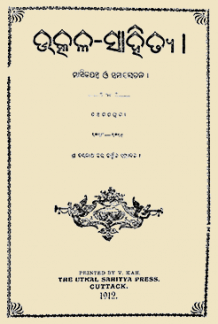
Rama Shankar Ray in response to an article of Chintamani Acharya in Utkala Sahitya presented the drama situation in Odisha in the last decades of the 19th and in the first two decades of the 20th century.(Utkala Sahita, Vol.XXII,No.VIII, Margasira 1326 (Sala),p. 371-376) Kanchi Kaveri was staged in Odisha for 37 years after its composition as admitted by Rama Shankar Ray in his focus.(Ibid.) He expressed the view that in Odisha there was no enactment of Odia drama because Odia drama was not written before him. He also expressed deep unhappiness for the absence of dramatic platform (stage) in Odisha even after the composition of the Odia dramas.
The stage is the reflection of national mind and it modifies it to a great extent. As early as 1920 there was a necessity for a national stage in Odisha.(Utkala Dipika,24th January 1920) In an interesting focus Bhupati Bhusan Mukherjee stated that the time had come for Odisha to be active and to make up for the delay in having a national stage and a national drama.(Ibid.) He highlighted the effort of Banamali Pati of Puri in this direction. For seven years from 1913-14 Banamali Pati unaided and sometimes even in the face of damping criticism had maintained a theatre called Radhakrishna Theatre which would go down to posterity as the pioneer and father of the future national stage of Odisha.(Ibid.) He had not spared money and time and as a result of his lifelong devotion to the cause of national drama. He had collected and trained many young boys and men whose remarkable histrionic talent would have remained unnoticed and undiscovered, to fade in the desert air. This stage under the able management of Kunja Bihari Bose produced two plays-Chaitanya Lila and Jayadeva in January 1920. The Cuttack public did not forget the marvellous representation of Jayadeva and the sweet songs of Krishna and Padma. The stage creates the drama and in Odisha too, within such a short period of time this had taken place, as Rama Shankar Ray, Godavarish Mishra, Bhikari Charan Pattnaik, Aswin Kumar Ghosh and others were increasing the ranks of Odia dramatists and were creating Odia dramas.(Ibid.) Mukherji asserted that Odias should not forget the contribution of Banamali Pati in laying the foundation of the Odia stage of the future.(Ibid.)
Kanchi Kaveri tradition was well known in Odisha and for which in the nationalist phase when the Odia assertion of identity was at the extreme phase it continued to be popular in dramatic stages. In the Basanta Rangamancha in Cuttack Raja Purushottama Deb a drama of Bhikari Charan Pattnaik was staged in March 1924.(Utkala Dipika, 15th March 1924) In that phase Gajapati Purushottama, the hero of Kanchi Kaveri tradition, was a symbol of Odia glory and so the theme on him was very popular and excited the nationalist passion and pride of the Odias.

Odias in the thirties of the 20th century felt that the place of Rangamancha was at the top of the domain of nationalist culture. They evaluated the value of the Odia dramas at any rate because such dramas and their enactment help in the construction of Odia identity. (Sahakara, Vol XXIII,No X.p.424-428) In the 1930s in Berhampur Manmohan Theatre party was very active and staged different Odia dramas- Kalapahad, Arjunaparajaya, Nara Narayana etc.(Nabeen, 13th May 1930) In 1929 in Berhampur there was another theatre group called Natyamandir Nataksangha by Sarathi Sahu. The party staged dramas in Dharakot, Rasul Kunda, Parlakhemundi, Berhampur, Khurda and Cuttack etc. and won admiration from the public.(Ibid.,) Art Theatre-a Natak Sangha of Cuttack was very successful in 1930s on the stage play. The manager of the party Govind Mohan Mukherjee was a famous actor.(Ibid., 2nd December 1930) After the death of Banamali pati his Radhakrishna Theatre was transformed into Art Theatre and Mukherji was in both stage.(Ibid.) The proprietor of the Art Theatre in 1930 was Aswin Kumar Ghosh, a great dramatist of Odisha.(Ibid.) The historical dramas like Kalapahad and Gobinda Vidyadhar were staged by Mukherji and were extra-ordinarily successful . Radhakrishna Theatre declined in 1920 and Art Theatre started from that phase and was very famous and active on stage play till 1930.(Ibid.) The effort of the leaders of the Theatre party was widely appreciated in Odisha. Even Sita Rameya, a Telugu nationalist remarked at the success of the party- “The Telugu stage had to learn much from the Odia stage. In this respect, I hope Odia brothers will be our kind teachers”.(Ibid.16th December 1930) In 1932 in Khurda Taruna Natya Sansad was established by the effort of Sachidananda Routray and other students of this area.The aim of this Natya Sangha was to introduce new artistic vigour, thought and style in the Young group.(Ibid., 5th April 1932) Before this centre there was Sailabasini club in Khurda as a Natya Sangha, but it was not effective in the thirties. Taruna Natyasansad staged Abhimanyu in a temporary stage in Gurujang (khurda) which was called Sabujamahal.(Ibid.)
In the thirties there was a demand for a permanent stage in Cuttack. Aswin Kumar Ghosh had tried his best for a permanent stage, but he was not successful till 1933. (Sahakara, Vol. XIV,No.I, 1933, P. 94-95) It was decided to make a permanent stage for the Art Theatre. The Art Theatre was more aesthetic and the managers had no business outlook for which a permanent stage construction could not be possible even in 1933. By 1938 the Art Theatre dominated the stage activities and then it began to wane.(Ibid.19th July 1938) In 1938 also the Odia nationalists felt the need of a permanent stage, but they were not successful.(Ibid.) The need of a permanent stage was also felt in 1942 when the Art Theatre declined and Odisha Theatres of K.C. Pattnaik was active. Odisha Theatre used the Sabha Mandap of Utkala Sahitya Samaj for their purpose. The Odias in the 1940s felt that a modern and permanent stage was necessary as an essential part of Utkala Sahitya Samaj.(Ibid.,30th June 1942)The members of this Samaj appealed for help to the Chief of Parlakhemundi for the establishment of a stage permanently in Odisha.(Ibid.)
Annapurna Theatre of Banapur became a successful group after the decline of Art Theatre in the 1940s.(Ibid.) The Odias accepted the Annapurna Theatre as a progressive Natyapitha which represented Odia cultural space.(Ibid.) This Theatre group was animated with a nationalist passion. It staged on March 22 1942 Konarka of Aswin Kumar Ghosh in a novel way. Natyarathi Balai Banerji was the actor for Bisu Maharana and in his action showed his skill that enriched the natyapitha with nationalist ideas.(Ibid.) In this stage Karthik Kumar Ghosh, Kasinath and famous drama queen Radharani were the actors and actress.(Ibid.) Odisha Theatres was another significant dramatic club in Odisha in the 1940s and for six weeks in Cuttack the drama Bhata of K.C. Pattnaik was staged by this Theatre.(Ibid.,22nd August 1944)
Orissa Theatres began from the end of 1939 and it became a very effective dramatic club. According to Hindustan Standard, from 1939 to 1950 Orissa Theatres was run by K.C. Pattnaik which had an important place in the annals of modern stage in the state.(Hindustan Standard, 17th August 1958) His association with the ruler of Mayurbhanj and Raja Saheb of Puri in the late 1920s enriched the experience of this budding musician and poet. He fought against heavy odds and brought about a great revolution in the history of stage play by introducing social dramas and educated girls on the stage.(Ibid.) Thus Kalicharan had brought a remarkable transition in the phase of the Odia drama and its enactment in the stage.
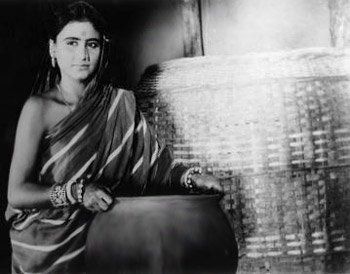
In the thirties of the twentieth century Cinema became a part of the cultural activities of the Odias. In 1936 Kali Film Company of Calcutta released Sita Bibaha which marked an advancement in the Odia cultural life. Mohan Sundar Deb Goswami was the director of this film. But this film did not satisfy the Odia sentiment. (Nabeen,3rd December 1940) By `1939 Oriya Film Corporation was established in Calcutta in the Sashibhusan Dey Street. The Company started with a capital of two lakhs of rupees and the purpose was to release films reflecting Odia sentiment.(Deshkatha, 2nd August 1939) In 1941 at Rambha of Ganjam in the Sangeet Sammilani of All Ganjam a committee was established for the production of an Odia film. It was also decided to take the help of the benevolent people and institutions for the success of the scheme. Many people of Cuttack also accepted the proposal of the Sammilani for a film.(Nabeen, 25th March 1941) In 1943 an institute called Utkala Talkies was started with the capital of one lakh and fifty thousand rupees.(Ibid.,7th December 1943) The institute decided to release its first Odia film called Dosa Kahara. It was decided that the institute would be run by five directors and that Dibakar Patnaik would be the first director. The five directors would contribute each a share of rupees ten thousand and an industrialist of Bombay would contribute one lakh for the working of the institute.(Ibid.) But the result remained uncertain. In spite of very unsatisfactory progress in the film line the second Odia film Lalita appeared in 1948 by the effort of Gaura Chandra Pratapsingh Deb. It was prepared by the Great Eastern Movietone. It was then commented that the film should represent modern ideas of the Odias.(Ibid., 26th October 1948) The chief actor of this film was Lokanath Mishra and the actress was Uma Goenka.(Ibid.) Despite this film the Odias felt the need of a good film in Odia and the third film Sri Jagannatha of Rupa Bharati (Cuttack) did make some improvement in this respect.(Ibid., 5th June 1951) The Odias felt that due to inactivity and want of effort film industry could not make progress.(Ibid.) The production of Odia films by the funds of the shareholders could not bring success and so many people of Odisha wanted the support of the rich industrialists of Odisha. They suggested in the 1950s that enthusiastic and rising industrialists like Biju Patnaik would give their kind attention to this national need and that by their efforts only film production would be successful in near future.(Ibid.) Thus in the 1940s and 1950s the Odias wanted to reflect their culture and life in films, but it was not very successful in this phase.






















